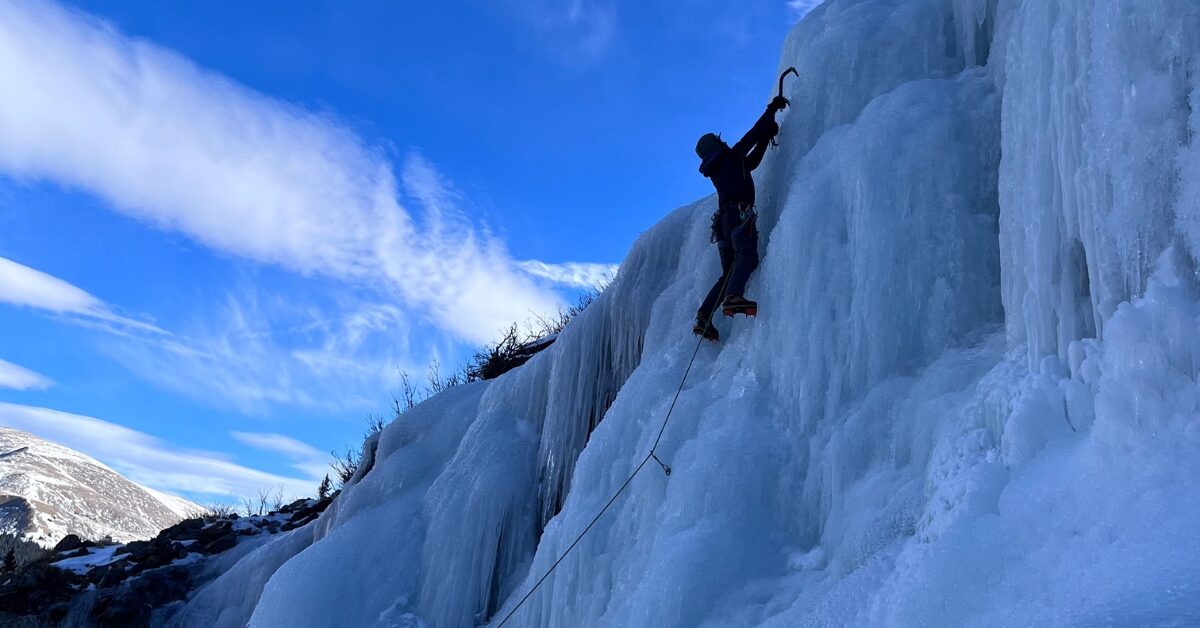
Lincoln Falls needs little introduction as one of the finest ice climbing destinations in Colorado! Situated at the base of Mt. Lincoln, this superb crag is a premiere location for reliable multi-pitch ice and early-season sticks.
Lincoln Falls is perched on the north side of the popular Colorado 14er, Mt.Lincoln, known for a popular hiking route called The Decalibron. This gem is nestled between the charming mountain towns of Breckenridge and Alma. To reach Lincoln Falls, start from Hoosier Pass and head south on Colorado State Highway 9. Turn off onto County Road 4, where a winding, often icy road will lead you to the north side of Montgomery Reservoir. Park here and get ready for an unforgettable day of ice climbing. One hazard to be aware of is the slope to the North of the approach trail, it has slid many times in years past. Avoid this approach during high avalanche conditions.
Meet up with your friends and carpool at one of Colorado’s many Park-n-Rides to save space at the trailhead! Send us an email if you need any further details on parking and access.

Lincoln Falls hosts a range of routes from beginner-friendly single pitches to challenging multi-pitch climbs and difficult dry tooling. Known for its early season conditions and reliable ice, the area attracts climbers from across the state and beyond. The falls are steep and varied, offering something for every skill level. The Scottish Gully is the crag’s main line, and it sees a lot of traffic. Depending on the year, different flows form up better or worse than years before, opening up lots of options (or not).
Situated in the high alpine, the approach and climbing here feel stout due to the environment and high altitude. Be prepared for a good challenge from route finding to risk management. Be careful climbing below other parties as always. “Dinner plates” are a common condition here, which leads to a lot of falling ice.
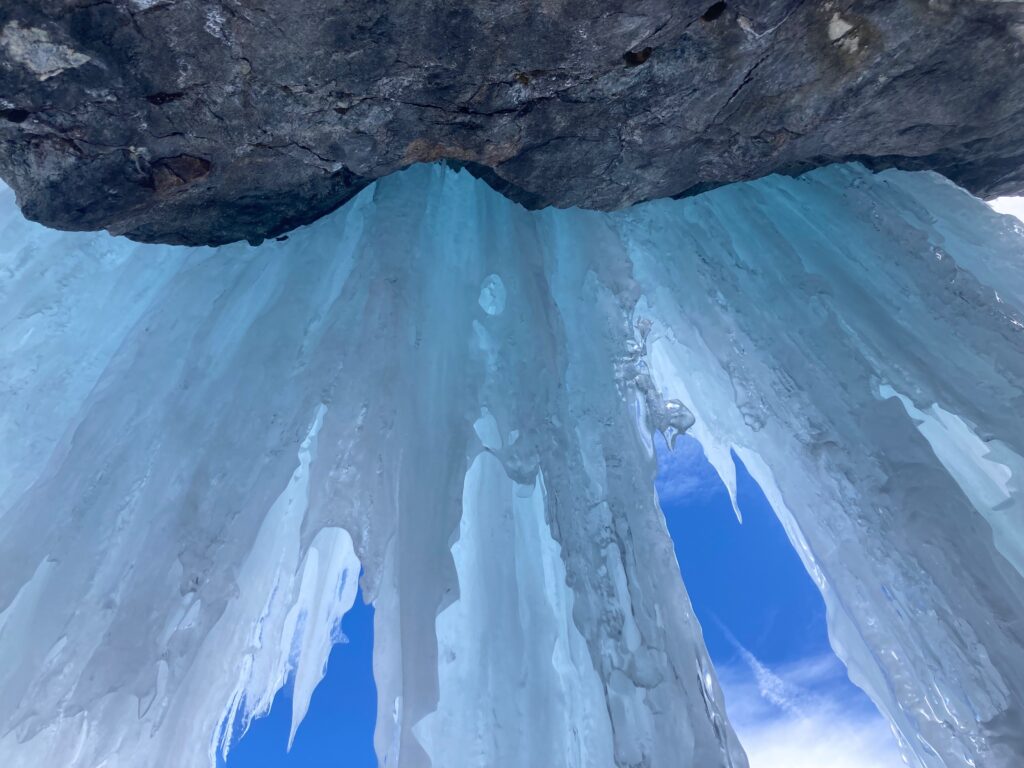
All the essentials! Steep Ice tools such as the CAMP X-Dreams and mono point crampons such as the CAMP Bladerunners are great for the brittle, hard, steep ice that forms at Lincoln Falls. When it comes to mountaineering and ice-climbing boots, you can’t beat Asolo. You can find a more detailed packing list here.
A 60M single rope will be good enough for Lincoln if you plan to walk off at the top. If you want to rappel down the routes you climb up, I’d climb on twins or double ropes for an easier escape. If it’s a busy day, consider walking off to avoid rapping down on the parties who may be following you up the route.
Bring layers and prepare for every season. Reward yourself for a well-earned approach with a warm thermos of your favorite coffee or tea, it goes a long way!
The weather at Lincoln Falls can be as rugged as the terrain. Given its high altitude and exposure, conditions are constantly in flux. Temperatures can vary drastically between day and night, often causing a freeze-thaw cycle that directly impacts the quality and safety of the ice. Mornings might bring firm, solid ice due to overnight freezing, while the sun’s warmth later in the day can soften routes, creating challenging—and sometimes unstable—conditions.
Winter storms frequently sweep through the area, bringing fresh snowfall that not only impacts accessibility but also raises avalanche risks. The approach to Lincoln Falls passes through avalanche-prone zones, so staying informed and prepared is crucial. We strongly recommend bringing avalanche safety gear, such as a beacon, probe, and shovel, like those available from Mammut. We have witnessed and reported on avalanches at this venue, despite their infrequency, this should be considered complex avalanche terrain.
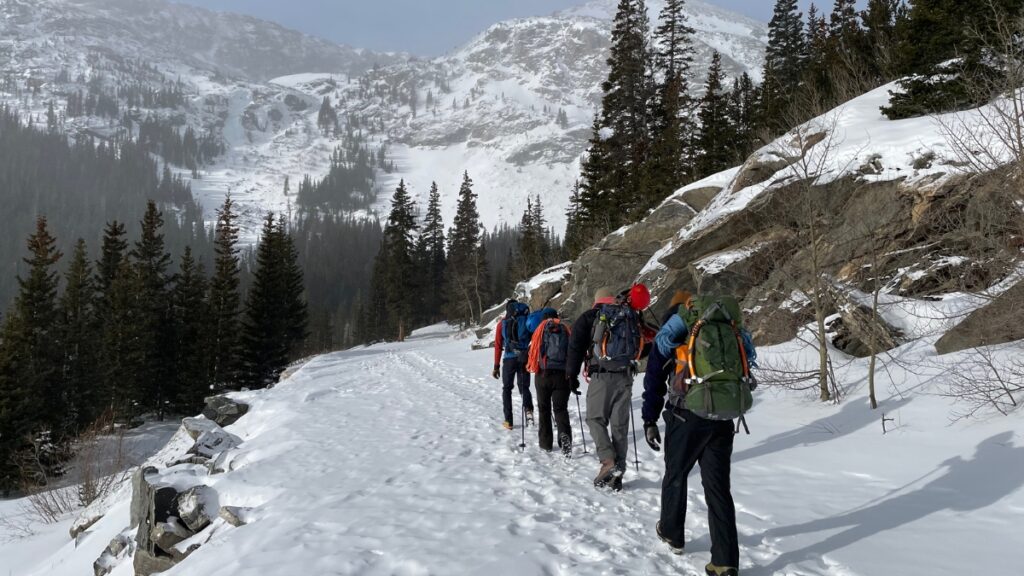
Lincoln Falls’ microclimate means conditions can change rapidly, even within the span of a few hours. Sunny days are common, but so are intense snow squalls and strong gusts of wind, which can make the approach and climb more strenuous. Be prepared to adjust your plans based on current weather and ice stability. Luckily, an escape from here is straightforward.
The Lincoln Falls climbing season typically spans from November through late April, offering some of the earliest and most reliable ice in Colorado. The high elevation and unique positioning at the base of Mt. Lincoln allow ice formations to solidify well before other areas begin to freeze, making it a prime location for early-season climbers.
In November, Lincoln Falls often boasts the first climbable ice of the season, drawing climbers eager to kick off the winter. Early season ascents offer a unique experience with lower traffic on the routes and fresh ice formations. However, early in the season, routes may still be forming, and ice thickness can vary. A cautious approach is key, as freeze-thaw cycles are still settling in and creating new structures. Let it form up and don’t climb things that look sketchy! Be a good steward of the sport.
By January, Lincoln Falls is in peak condition, with thick, stable ice across many classic routes. These months offer some of the most consistent and climbable ice, and routes are well-formed after weeks of cold temperatures. During this time, the ice is often at its most stable, making it ideal for both beginner climbers and those looking to push their skills on multi-pitch terrain.
The winter months also bring heavier snowfall, increasing the risk of avalanches, especially on routes near avalanche-prone slopes or gullies. Checking avalanche forecasts and being aware of current conditions is especially important as these months bring the greatest volume of snow and wind activity in the area.
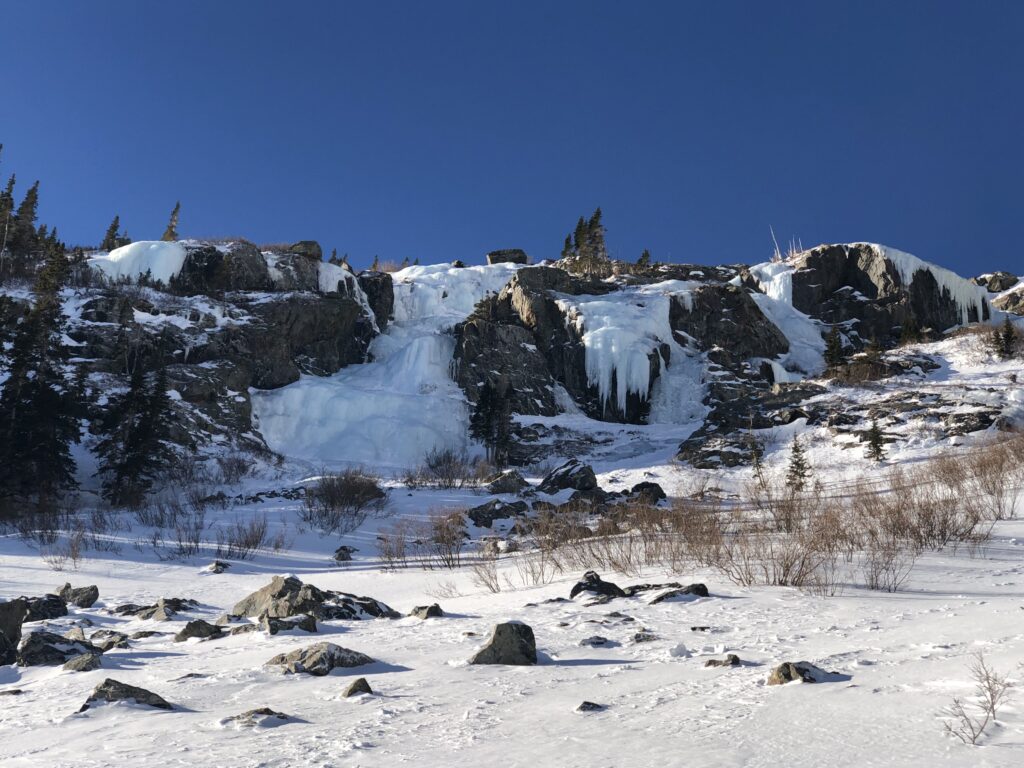
In March and April, climbing conditions remain favorable, though warmer temperatures introduce more frequent freeze-thaw cycles. These cycles create soft ice in the afternoon and are key to maintaining Lincoln Falls’ ice formations late into spring. However, they also require climbers to be aware of changing ice stability and more frequent shedding, especially in the afternoon.
The warmer temperatures can make for more comfortable days on the ice but increase the importance of an early start. Ice conditions can deteriorate quickly as the day warms up, so it’s wise to begin climbs in the morning and plan to descend before the afternoon thaw.
While rare, Lincoln Falls has been known to hold ice into early summer in exceptional years. When late snowfalls and consistently low temperatures persist, conditions might allow for limited routes well into May or even as late as July. This extended season is a unique opportunity for climbers seeking solitude on the ice, though by this time, the terrain is usually quite variable, and safety considerations become even more critical.
Whether you’re planning a trip in early winter or the heart of spring, Lincoln Falls offers a dynamic and challenging environment that keeps climbers returning year after year. For the latest updates on ice conditions, visit our Conditions Page, where our guides provide up-to-date insights and forecasts for the season ahead.
Looking to take on Lincoln Falls with the guidance and expertise of seasoned AMGA professionals? Our guided ice climbing trips at Golden Mountain Guides provide everything you need for an unforgettable experience at one of Colorado’s premier ice climbing venues. Our expert guides are passionate about teaching climbers of all skill levels and ensuring each guest has a safe, enjoyable adventure on the ice.
Whether you’re a beginner wanting to learn the basics of ice climbing or an experienced climber aiming to refine your technique on steeper, more technical routes, we’ll tailor the experience to your goals. Our team covers essential skills, from foot placement and efficient ice tool techniques to advanced concepts for those aiming to transition to steeper, multi-pitch routes. Not sure where to start? Check out some of our ice climbing courses.
Safety is at the forefront of everything we do, and we provide all the technical gear you’ll need, including ice tools, crampons, helmets, harnesses, and ropes. Just bring your sense of adventure and a readiness to learn! Our guides also ensure that clients are well-versed in the specific considerations unique to Lincoln Falls, including assessing ice stability, weather impacts, and managing avalanche terrain.
Contact us to book your trip now.
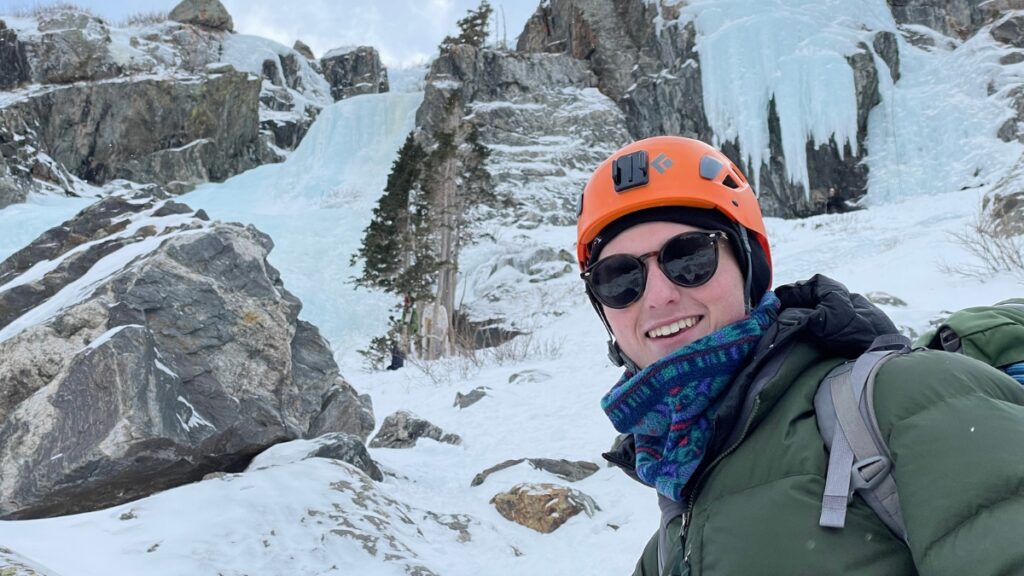



Content Copyright © 2025 of Golden Mountain Guides. All rights reserved. | Privacy Policy | Site Map